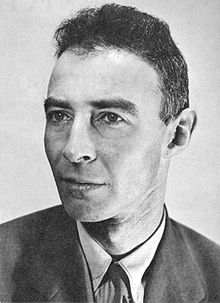SOPHONS DETAILED DESCRIPTION:
Sophons are created by dimensionally unfolding eleven-dimensional protons with Trisolaran particle accelerators, reducing them to two-dimensional protons.
In two-dimensional form, they are embedded with circuitry to form a supercomputer. Once online, the embedded supercomputer can control the dimensional level of the proton and fold itself back into an eleven-dimensional proton. To the naked eye, protons can unfold themselves to the fourth, fifth or sixth dimension and grow larger in each sub-dimension without changing their mass. They can record everything visually, and so their secondary purpose is to act as surveillance devices by instantly teleporting the information they collect back to another sophon via quantum entanglement. For trisolaran producers, their primary purpose is to disrupt Earth’s particle accelerators, they can get in the paths of the fired particles and confuse the results of experiments before they reassemble, effectively blocking the progress of science.
Because they can travel at the speed of light through three-dimensional space, a single sophon can disrupt all of Earth’s particle accelerators.
WHAT IS QUANTUM ENTANGLEMENT?
Quantum entanglement is the phenomenon of a group of particles generating, interacting or sharing spatial proximity in such a way that the quantum state of each particle of the group cannot be defined independently of the state of the others, including when the particles are separated by a large distance. The issue of quantum entanglement is at the heart of the difference between classical and quantum physics: entanglement is a fundamental property of quantum mechanics that is absent in classical mechanics
Measurements of physical properties such as position, momentum, spin and polarization made on entangled particles can, in some cases, be perfectly correlated. For example, if a pair of entangled particles is produced such that their total spin is known to be zero, and one of the particles is found to have clockwise spin on the first axis, the spin of the other particle measured on the same axis is found to be counterclockwise. However, this behavior leads to seemingly paradoxical effects: any measurement of the properties of a particle causes an apparent and irreversible wave function collapse of that particle, altering its original quantum state. In the case of entangled particles, such measurements affect the entangled system as a whole.
Such phenomena were the subject of a 1935 paper by Albert Einstein, Boris Podolsky and Nathan Rosen, and several papers by Erwin Schrödinger shortly thereafter, describing what became known as the EPR paradox. Einstein and others thought such behavior was impossible because it violated the local realism view of causality (Einstein called it “spooky action at a distance”) and argued that the accepted formulation of quantum mechanics must therefore be incomplete.
Later, however, the counter-intuitive predictions of quantum mechanics were confirmed in tests in which the polarization or spin of entangled particles was measured at separate locations, statistically violating Bell’s inequality. In earlier tests, it could not be ruled out that the result at one point could have been subtly transmitted to the distant point, affecting the result at the second point. However, the so-called “gapless” Bell tests were performed where the locations were sufficiently far apart that communication at the speed of light would take longer – in one case 10,000 times longer – than the interval between measurements.
According to some interpretations of quantum mechanics, the effect of a measurement is instantaneous. Other interpretations, which do not accept wave function collapse, dispute that there is any “effect” at all. However, all interpretations agree that entanglement produces correlations between measurements and that mutual information between entangled particles can be exploited, but that any information transfer is impossible at speeds higher than light. So, despite popular opinion to the contrary, quantum entanglement cannot be used for faster-than-light communication.
Quantum entanglement has been experimentally demonstrated with photons, electrons and even small diamonds. The use of entanglement in communication, computing and quantum radar is an active area of research and development.



#SciFiLovers #SciFiCommunity



